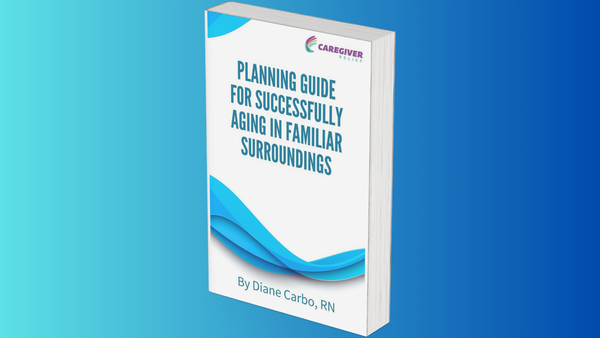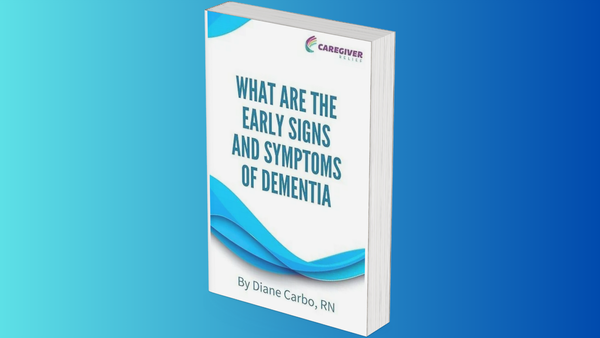Understanding the ADAS COG: The Alzheimer's Disease Assessment Scale Cognitive Subscale
The ADAS-Cog is a frequently used test to measure cognitive abilities in individuals participating in clinical trials. It primarily measures language and memory abilities and consists of 11 parts, taking approximately 30 minutes to administer.

Dementia is a broad term used to describe a range of neurological conditions affecting the brain that get worse over time. These conditions impact memory, thinking, behavior, and the ability to perform everyday activities. Alzheimer's disease is the most common type of dementia, accounting for 60-80% of cases. The Alzheimer's Disease Cooperative Study (ADCS) plays a crucial role in clinical trials and research analyses targeting Alzheimer's disease and mild cognitive impairment, employing methodologies such as the ADC-008 trial to assess cognitive decline and clinical outcomes associated with various treatments.
Another significant initiative in Alzheimer's research is the Alzheimer's Disease Neuroimaging Initiative (ADNI), which provides a prominent source of datasets utilized in designing and implementing studies aimed at understanding and managing the disease. ADNI is often used as a benchmark for validating clinical methodologies and assessing disease progression in patients with mild cognitive impairment and Alzheimer's disease.
Understanding the different types of dementia is essential for accurate diagnosis and treatment. Other common types include vascular dementia, Lewy body dementia, and frontotemporal dementia. Each type has distinct characteristics and may require different approaches to management and care.
Introduction to the ADAS-Cog
The Alzheimer’s Disease Assessment Scale-Cognitive Subscale (ADAS-Cog) is a cornerstone in the realm of neuropsychological assessments, particularly for evaluating cognitive symptoms in individuals with Alzheimer’s disease. Developed in the 1980s, this assessment scale has become a gold standard in clinical trials, providing a robust measure for assessing the effectiveness of various treatments. The ADAS-Cog comprises 11 tasks that meticulously evaluate different cognitive domains, including memory, language, and praxis. This comprehensive approach ensures that the scale captures a wide array of cognitive abilities, making it an indispensable tool in both research and clinical settings.
Unveiling the Alzheimer's Disease Assessment Scale Cognitive SubScale (ADAS-Cog): A Comprehensive Measure of Cognitive Abilities in Clinical Trials
The ADAS-Cog is a frequently used test to measure cognitive abilities in individuals participating in clinical trials. It primarily measures language and memory abilities and consists of 11 parts, taking approximately 30 minutes to administer.
How is your memory?
The Alzheimer’s Disease Assessment Scale Cognitive SubScale (ADAS-Cog) is a widely utilized test for evaluating cognitive abilities in individuals participating in clinical trials. It serves as a comprehensive assessment tool, surpassing the limitations of the commonly used Mini Mental State Exam. With a primary focus on language and memory abilities, the ADAS-Cog consists of 11 distinct components, making it a thorough examination that can be completed in approximately 30 minutes.
Originally developed in 1984, the ADAS-Cog emerged in response to a pressing need to accurately quantify cognitive impairment in research participants based on their clinical diagnosis. While previous scales and assessments identified deficiencies in thinking processes, they failed to consistently and accurately measure the extent of deterioration caused by Alzheimer’s disease and other related conditions.
The ADAS-Cog encompasses a diverse range of questions to assess various cognitive domains. The original version of the test comprises the following 11 items, each designed to evaluate specific cognitive functions:
1.Word Recall: Participants are given three chances to recall as many words as possible from a list of ten words they were shown.
2.Naming Objects and Fingers: Individuals are shown real objects, such as a flower, pencil, and comb, and asked to name them. They are then required to state the names of each finger on the hand, such as pinky and thumb.
3.Following Commands: Test-takers are instructed to follow simple yet sometimes multi-step directions, such as making a fist or placing a pencil on top of a card.
4.Constructional Praxis: Participants are presented with four progressively challenging shapes, such as overlapping rectangles, and asked to draw each one.
5.Ideational Praxis: In this section, the test administrator prompts individuals to imagine they have written a letter to themselves. They are then asked to fold it, place it in an envelope, seal it, address it, and demonstrate where the stamp should be placed.
6.Orientation: This component measures a person’s orientation to time, place, and self by inquiring about their last and first name, the day of the week, date, month, year, season, time of day, and current location.
7.Word Recognition: Participants are asked to read and attempt to remember a list of twelve words. Later, they are presented with those words along with several others and must indicate which ones they saw earlier.
8.Remembering Test Directions: The ability to remember directions without reminders or with limited reminders is assessed in this section.
9.Spoken Language: The test evaluates an individual’s ability to effectively use language to make themselves understood throughout the examination.
10.Comprehension: Participants’ capacity to understand words and language over the course of the test is assessed by the test administrator.
11.Word-Finding Difficulty: The test administrator continually assesses the participant’s word-finding ability during spontaneous conversation throughout the examination.


The ADAS-Cog serves as a valuable tool for evaluating thinking processes and distinguishing between normal and impaired cognitive functioning. It proves particularly useful in determining the extent of decline in thinking abilities and can provide insights into the stage of dementia a person may be experiencing based on their answers and score. Its ability to detect incremental improvements or declines in thinking processes makes it a popular choice for clinical trials.
Scoring for the ADAS-Cog involves tallying the points from each section to obtain a total score. A higher score indicates a greater degree of dysfunction in thinking processes. According to research published in 2004 in the journal Alzheimer’s Disease and Associated Disorders, a normal score for individuals without Alzheimer’s or other types of dementia typically hovers around five.
The ADAS-Cog can be administered traditionally using pen and paper or through a computerized version, offering flexibility in test administration.
In terms of effectiveness, the ADAS-Cog has demonstrated high accuracy in differentiating individuals with normal thinking processes from those with impaired cognition. It reliably assesses the extent of decline in thinking abilities, making it a valuable tool for measuring cognitive functioning.
The National Institute plays a crucial role in funding and supporting research related to Alzheimer's disease, including initiatives like the Alzheimer's Disease Neuroimaging Initiative.
The ADAS-Cog stands as an indispensable instrument in the field of cognitive assessment, providing researchers and healthcare professionals with valuable insights into the cognitive profiles of individuals participating in clinical trials and aiding in the development of interventions to address cognitive decline. Evaluating the efficacy of clinical trials often hinges on detecting a statistically significant treatment effect, which underscores the importance of robust statistical methods in validating these findings.
Development and Validation
The ADAS-Cog was initially developed by Rosen et al. in 1984 as part of the broader Alzheimer’s Disease Assessment Scale (ADAS). This development was driven by the need to accurately assess the severity of both cognitive and non-cognitive symptoms in individuals with Alzheimer’s disease. Over the years, the ADAS-Cog has undergone several revisions and validations to enhance its reliability and validity. Notably, a study by Mohs et al. in 1997 confirmed its effectiveness in assessing cognitive decline, solidifying its status as a reliable tool for measuring cognitive impairments in Alzheimer’s patients.
Psychometric Properties
The ADAS-Cog is renowned for its strong psychometric properties, which include high test-retest reliability and internal consistency. These attributes make it a dependable tool for assessing cognitive function over time. The scale’s sensitivity to changes in cognitive function is particularly valuable for monitoring disease progression and evaluating treatment responses. However, it is worth noting that the ADAS-Cog has been critiqued for its ceiling effects, which can sometimes limit its ability to detect subtle changes in cognitive function, especially in individuals with mild cognitive impairment.
Clinical Applications
In the realm of clinical trials and research studies, the ADAS-Cog is a widely used tool for assessing the effectiveness of treatments for Alzheimer’s disease. Its comprehensive nature allows for a detailed evaluation of cognitive function, making it invaluable for monitoring disease progression and treatment response. In clinical practice, the ADAS-Cog is often used alongside other cognitive measures, such as the Mini-Mental State Examination (MMSE) and the Clinical Dementia Rating Scale (CDR), to provide a holistic assessment of cognitive abilities. This multi-faceted approach ensures that healthcare professionals can make well-informed decisions regarding patient care.
Comparison with Other Scales
When compared to other cognitive scales, the ADAS-Cog stands out for its comprehensive assessment of cognitive function. While the Mini-Mental State Examination (MMSE) is frequently used as a screening tool for cognitive impairment, the ADAS-Cog offers a more detailed evaluation. On the other hand, the Clinical Dementia Rating Scale (CDR) provides a global measure of cognitive decline across multiple domains. Research has shown that the ADAS-Cog is more sensitive to changes in cognitive function than the MMSE, but it is less sensitive than the CDR. This makes the ADAS-Cog a valuable tool for detecting statistically significant differences in cognitive abilities, particularly in clinical trials and research studies.
By maintaining a consistent tone and style, and incorporating the specified SEO keywords, these new sections will seamlessly integrate into the existing article, providing readers with a comprehensive understanding of the ADAS-Cog and its significance in the assessment of cognitive impairments in Alzheimer’s disease.
You might also like this article:
Other tests:











